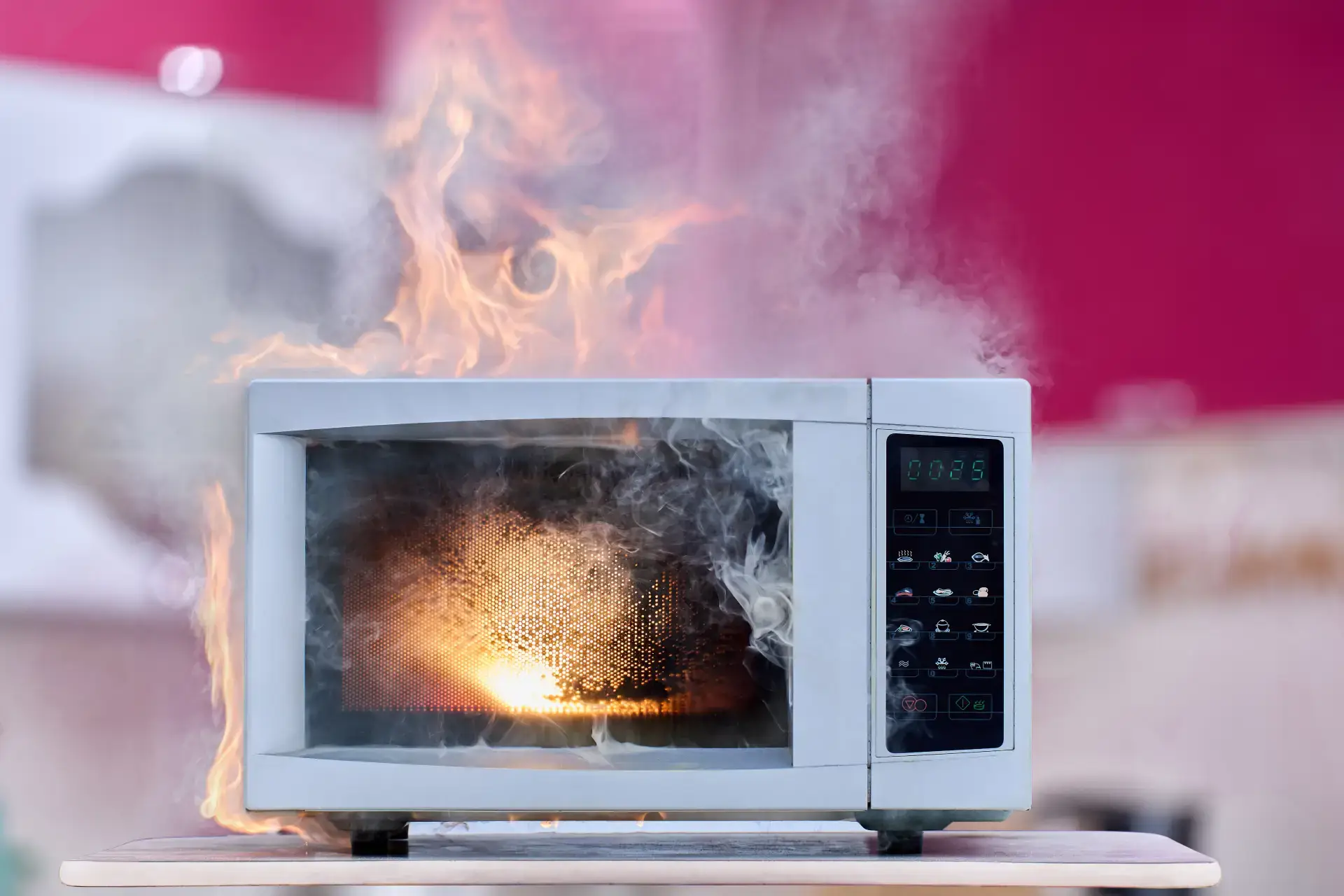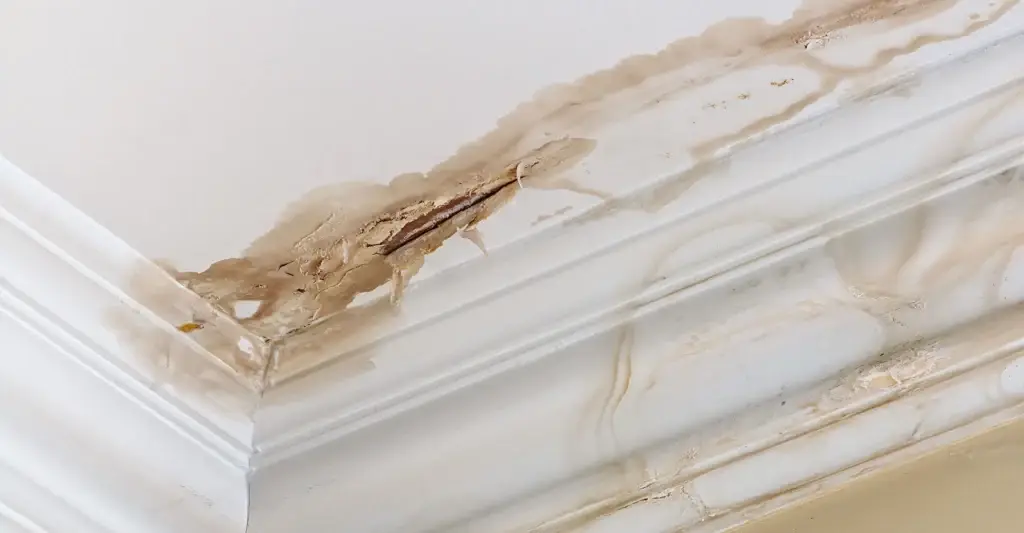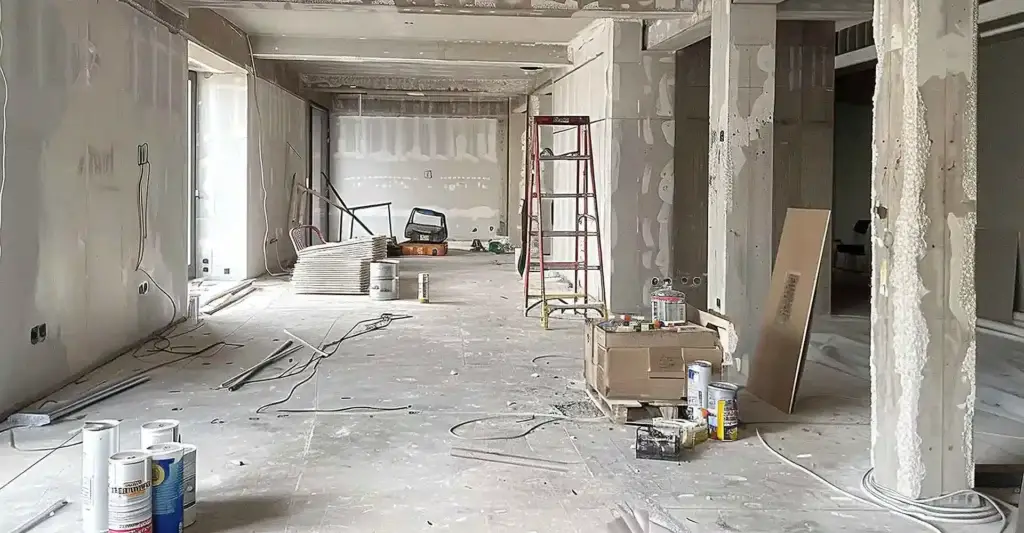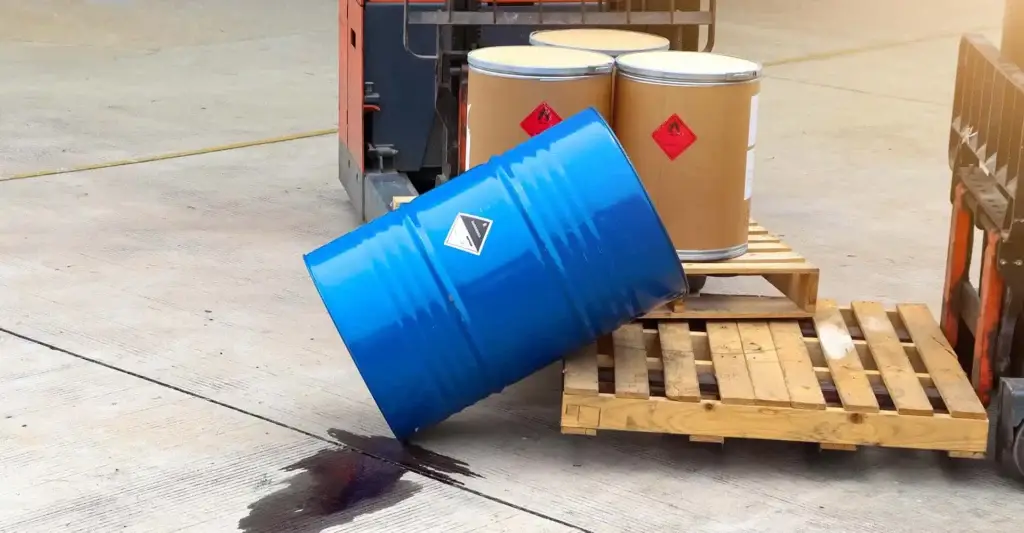A house fire is a devastating and traumatic event, one that no homeowner should ever have to face. While the immediate danger is over, you’re left to navigate the emotional and physical aftermath, from dealing with insurance companies to facing the monumental task of fire damage clean-up.
This isn’t just about putting out a fire; it’s about dealing with the complex reality left behind. We know you have questions, and this guide is here to provide the answers you need to start getting your home and your life back on track.
Skip to:
The cost of cleaning up after a fire
Understanding fire damage: More than meets the eye
When the fire brigade leaves, you might think the worst is over. Unfortunately, the real damage often begins long after the flames are gone. Fire damage is a multi-layered problem, and a quick clean-up with a mop and bucket won’t cut it.
A fire leaves behind a destructive combination of soot, smoke, and often, water. All three of these elements work together to cause further damage if not treated correctly.
- Soot and ash: The black, powdery residue left behind is far from harmless. Soot is acidic and corrosive, eating away at surfaces and causing permanent staining within hours.
- Smoke odour: Smoke particles are microscopic and can penetrate every surface, from carpets to drywall. This leaves behind a stubborn, lingering odour that can render a property uninhabitable.
- Water damage: The water used to put out the fire can cause extensive secondary damage, leading to mould growth, dampness, and structural issues if not dried out and treated promptly.
According to a recent report from the Ministry of Housing, Communities, and Local Government, the average area of damage to dwellings in England was 14.7m² in the year ending March 2025, which represents a slight increase from the previous year. This shows that while we are getting better at preventing large fires, the impact of even a small fire can be significant.
The most common causes of UK house fires
Understanding how fires start can help put your mind at ease and, more importantly, prevent them from happening in the future. In the year ending March 2025, Fire and Rescue Services (FRSs) in England attended 142,494 fires. When it comes to fires in the home, the most common causes include:
- Cooking-related fires: A significant portion of home fires start in the kitchen. From a forgotten pan on the hob to a build-up of grease in extractor fans, cooking is a major culprit.
- Electrical equipment: Faulty wiring, overloaded plug sockets, and old or cheap appliances are frequent causes of electrical fires. A frayed wire on a kettle or an overloaded extension cord can have devastating consequences.
- Heating appliances: During the recent energy crisis, portable heaters became incredibly popular. However, if they’re used incorrectly, for example, by draping clothes over them to dry, they can easily overheat and ignite, becoming a major fire risk.
- Candles and smoking: Leaving a candle unattended or falling asleep with a cigarette are classic causes of house fires. While seemingly small acts, they can instantly turn a home into a disaster zone.

What to do after a fire: A step-by-step guide
In the chaotic hours and days following a fire, having a clear plan is essential. Here are the most important steps to take to protect yourself and your property.
- Call your insurance company: This is your most critical first step. Your insurer will guide you through the claims process and help you with everything from temporary accommodation to finding approved contractors for the clean-up. According to recent data from the Association of British Insurers (ABI), the average property claim payout for households in the UK was £6,200 in the second quarter of 2025, a clear demonstration of the financial support insurance provides.
- Secure your property: Once the fire service gives you the all-clear, you need to secure your property to prevent further damage or theft. This might involve boarding up windows and doors or arranging for temporary locks to be fitted.
- Arrange temporary accommodation: Depending on the extent of the damage, you may not be able to stay at your home. Your insurance company will advise you on this and may cover the cost of temporary accommodation.
- Contact your utility suppliers: The fire service may have turned off your gas, electricity, or water. It is crucial to have a professional engineer from your utility company check for damage and safely reconnect the supplies. Never attempt this yourself.
The cost of fire damage clean-up and restoration in the UK
One of the most pressing questions on your mind will be, ‘How much will this cost?’
The cost of restoring your home will vary significantly depending on several key factors:
- Size of the affected area: A fire contained to a single room will be less expensive than one that has affected multiple floors.
- Extent of the damage: This includes the severity of the fire damage, as well as the amount of smoke, soot, and water damage.
- Property location: Restoration costs can be higher in major metropolitan areas like London and the South East due to higher labour costs.
According to a recent cost guide from Checkatrade, the average professional fire damage clean-up in the UK costs between £5,000 and £6,500. For a full restoration project, which includes rebuilding and repairs, the average can be as high as £35,681 if the property is salvageable.
DIY vs professional clean-up: Making the right choice
It might be tempting to save money by handling the clean-up yourself, but this is a decision that could end up costing you far more in the long run.
The concerns of DIY
Health and Safety Risks: Soot and smoke contain hazardous chemicals and carcinogens. Without the right personal protective equipment, you are putting your health at serious risk.
- Ineffective cleaning: Household cleaners are simply not designed to combat the acidic nature of soot or the stubbornness of smoke particles. You may just spread the contamination, causing further damage to surfaces.
- Secondary damage: A superficial clean leaves behind unseen residues that will continue to cause corrosion and release unpleasant odours over time.
The value of a professional service
Professional fire damage clean-up companies have the expertise and specialist equipment needed to properly decontaminate your home. This includes:
- Advanced equipment: Industrial-grade HEPA vacuums, air scrubbers, and powerful deodorisation tools like ozone and thermal fogging machines that eliminate odours at the molecular level.
- Expert knowledge: Professionals can identify hidden damage, such as contaminated insulation or weakened structures, that a homeowner would easily miss.
- Insurance coordination: They can work directly with your insurance company, providing detailed reports and ensuring the job is done correctly to secure your claim. In the UK, it’s worth noting that the average fire claim payout ranges from £10,200 to £11,000, according to data from PCLA Loss Assessors, which underlines the need for professional, thorough work to satisfy your insurer.
The true cost of a fire: More than just the damage
Fire damage is not just a financial burden; it takes a significant toll on your well-being. According to a recent Insurance Times report, over 10,000 fire damage claims in the UK were invalidated in the year to March 2024 due to the lack of a working smoke alarm. This highlights the importance of taking every precaution and seeking professional help to ensure a complete and safe recovery, which is essential for your mental health as well as your property.
In the unfortunate event of a house fire, remember that you don’t have to face the clean-up process alone. Getting a professional on board from the very beginning can save you from future headaches and ensure your home is truly safe again. For expert advice on fire damage clean-up or a professional site survey, contact the Ideal Response team for a quote and guidance on your recovery.
Need to speak to a specialist urgently? Call 01622 926 505
Frequently asked questions about the cost of cleaning up after a fire
What is fire damage restoration and how long does it take?
Fire damage restoration is the process of returning a property to a safe and habitable condition after it has been affected by fire and smoke. This comprehensive process includes clean-up, repair, and often reconstruction. Depending on the severity, a typical restoration can take anywhere from a couple of weeks to a few months to complete.
What factors influence the cost of fire damage clean-up in the UK?
The cost of fire damage clean-up in the UK is influenced by several key factors: the size of the affected area, the extent and type of damage (e.g., soot, smoke, fire, and water damage), and the location of the property. Professional companies often work to salvage materials where possible to help reduce overall costs.
What is the average cost for professional fire damage clean-up in the UK?
The UK average cost for a professional fire damage clean-up typically ranges between £5,000 and £6,500. For a more extensive, full damage restoration project that includes repairs and reconstruction, the average cost can be around £35,681, especially if the property and its contents can be salvaged rather than requiring a complete rebuild.
What steps should I take immediately after a house fire in the UK?
Immediately after a house fire in the UK, you should contact your insurance company to initiate the claims process. It’s also crucial to secure your property (e.g., boarding up damaged windows and doors), arrange for alternative accommodation if necessary, notify your utility companies, and most importantly, engage professional fire damage clean-up specialists.
Why is professional fire damage clean-up essential after a fire?
Professional fire damage clean-up is essential because fire contamination is complex and goes beyond surface-level damage. Specialists possess the experience, expertise, and industry-leading equipment required to fully remove microscopic soot, ash, and smoke particles that household cleaning cannot. This thorough decontamination is crucial to prevent secondary damage and eliminate lingering toxic odours.
Does fire damage restoration include water damage clean-up from firefighting?
Yes, fire damage restoration often includes water damage clean-up. Firefighting efforts commonly involve significant amounts of water, which can cause its own set of problems. Professional restoration services typically handle the extraction of water and thorough drying of affected areas to prevent further issues like mould growth and structural deterioration.
What type of damage can secondary damage from fire cause if not cleaned properly?
If not cleaned properly, secondary damage from fire can cause significant long-term issues. Soot and ash are acidic and can eat away at surfaces, causing paint and fibreglass to yellow, metals to corrode, and clothing to stain. Persistent, unpleasant smoke odours can also render a property uninhabitable if not thoroughly removed.

Chris Hedges - Head of Marketing
With over 25 years' experience, Chris is adept at defining and driving strategy, while also enjoying hands-on operational delivery. He believes in an equal blend of creativity and analytical scrutiny, always finding inventive ways to achieve objectives, underpinned by evidence. Chris’s philosophies are simple: don't overcomplicate, always prioritise customer experience, and bend the rules just enough to cut through the noise and drive momentum and growth.





















